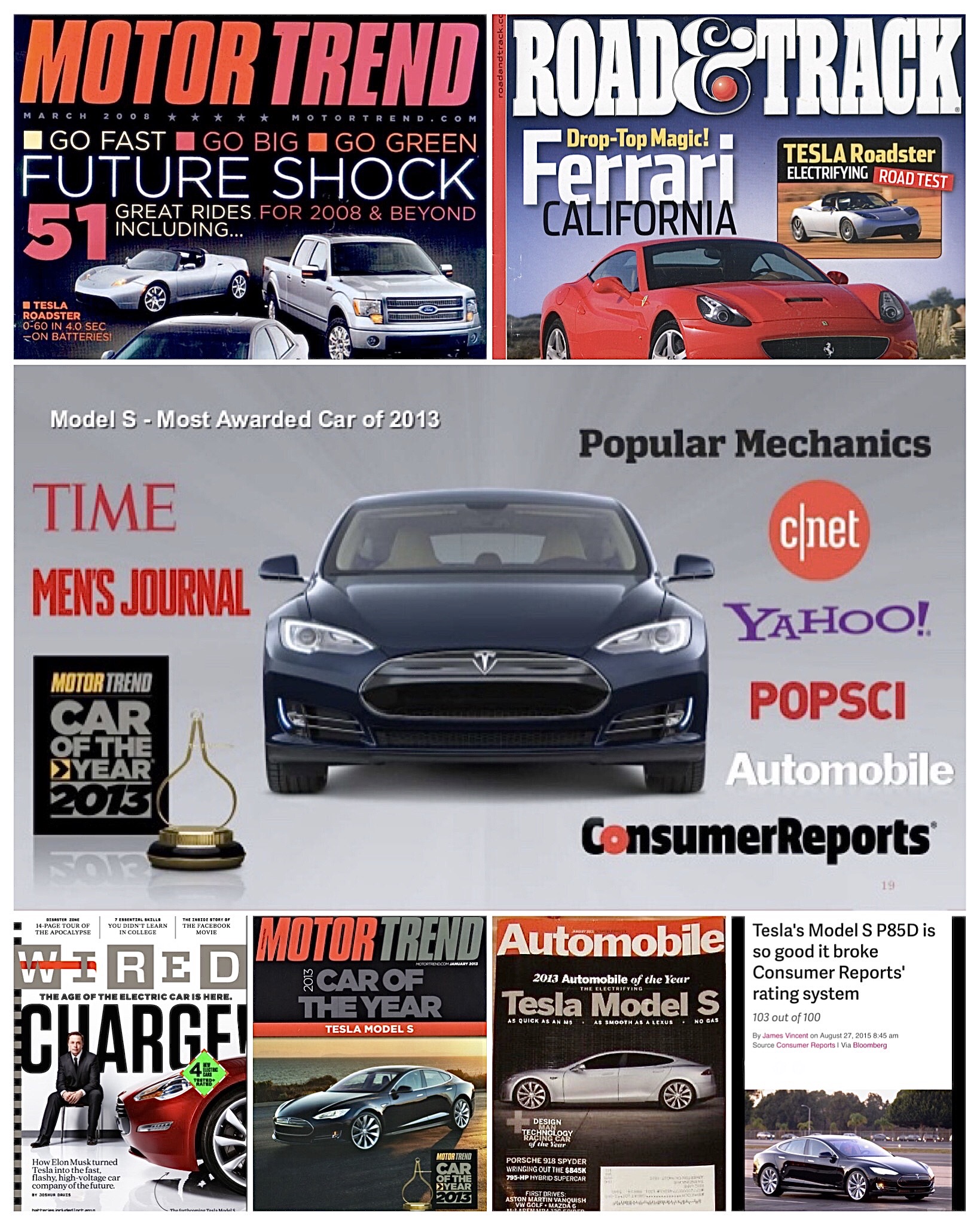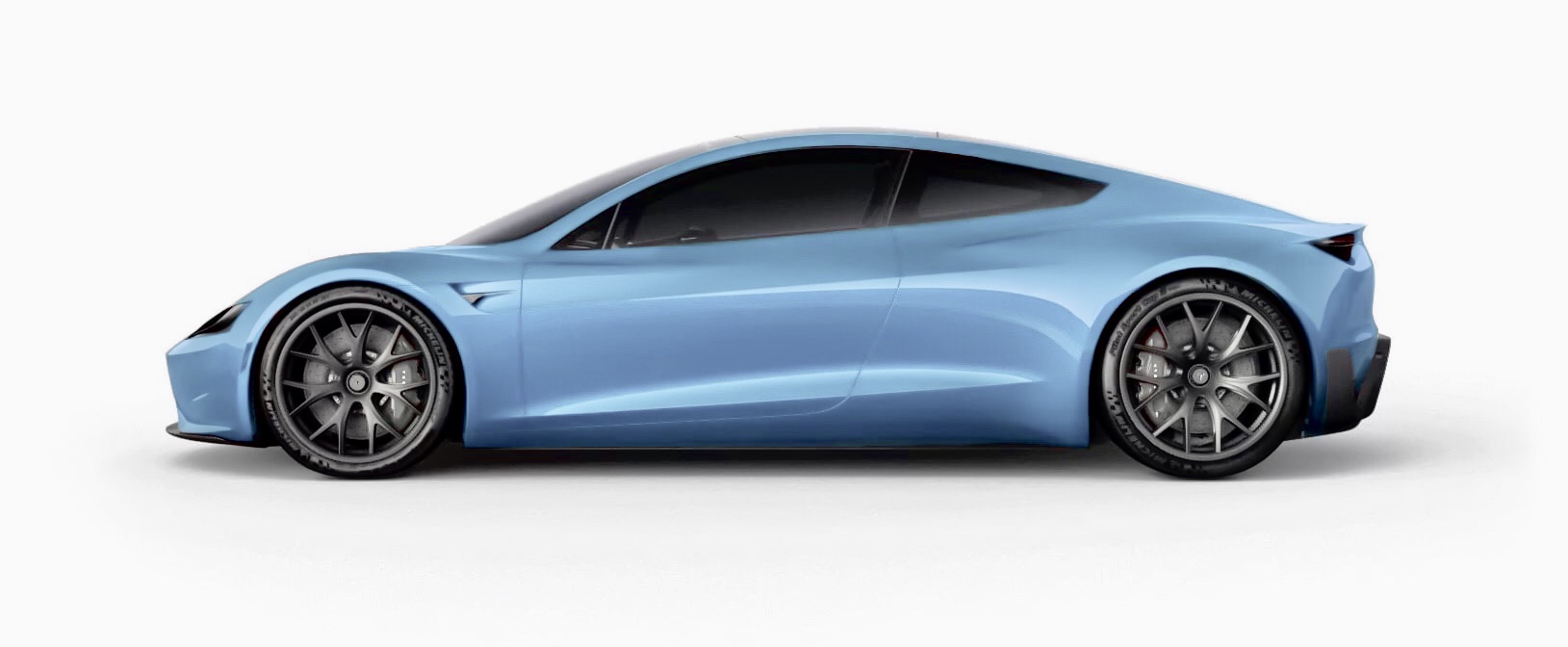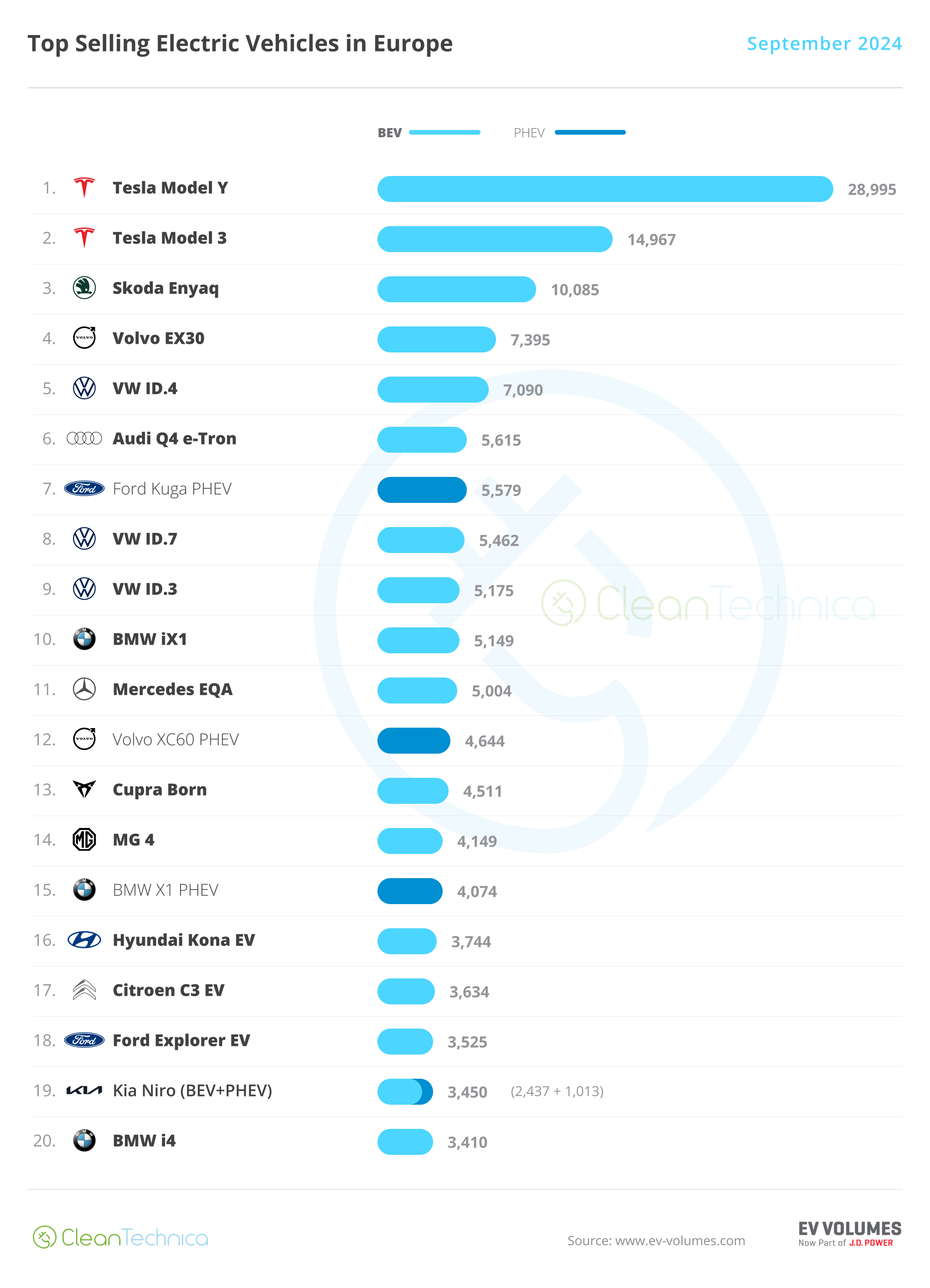Sign up for daily news updates from CleanTechnica on email. Or follow us on Google News!
In November of 2010, Tesla flew me out to their Silicon Valley headquarters for my first round of interviews. It was the “Roadster Days,” when Tesla was a fraction of its current size. You could just pull into the HQ and get a parking spot right up next to the building. In later years, getting such a coveted parking spot would be like snagging a seat on a New York City subway during rush hour. Good luck. Back then, Tesla only had about 1,000 employees — a small ragtag bunch of brilliant badasses determined to change the world for the better.

What a difference a decade has made. Now, more than 10 years later, Tesla has over 70,000 employees, is the most valuable automobile maker in the world, and is the fastest growing complex manufacturer in history. Within a decade, Tesla went from a niche boutique startup in California to an industry-leading global powerhouse. To this day, Tesla has retained its hardcore culture of relentless innovation. This culture of innovation has allowed it to overcome seemingly insurmountable obstacles on its path to get to where it is today, and to where it is going.
Reflecting on the humble time in which this picture of the parking lot was taken, and the decade of extraordinary growth that has followed, I thought I’d take a little stroll down memory lane and share some of my personal “Tesla Insider” stories about how the original Roadster, even after its planned end of production in 2011, continued to support the Tesla Mission in its own little ways. But first, let’s start with some context.
In the Beginning …
The Roadster was the car that started it all for Tesla. It was the company’s first consumer product, and the first step in Tesla’s grand “Secret Master Plan,” the roadmap for the company’s mission to accelerate the world’s transition to sustainable transportation & energy. It was an ambitious car for an ambitious goal. Directly inspired by the AC Propulsion tzero concept car, the Roadster showed the world that electric vehicles could look cool, be quick, have long range, and be much more than just glorified golf carts (which was the prevailing perception at that time). Although it was a low-volume niche product, the Roadster still struck a chord deep down in the psyche of some incumbent auto industry players. Even Bob Lutz, former head of General Motors and one of Tesla’s staunchest critics over the years, credits the original Roadster as being the catalyst for GM to develop the Volt, which went on to be crowned Motor Trend’s 2011 “Car of the Year” and Bob’s swan song at General Motors.
But while Tesla’s first offering did rattle a cage or two, traditional automakers as a whole — still very much content and unthreatened in their old internal combustion ways — dismissed Tesla as a small inconsequential niche player with an expensive and unproven technology. Because of this viewpoint, the large established OEMs did not immediately follow Tesla’s example, instead waiting more than a decade later to when Tesla’s success would all but force their hands to go all-in on electric vehicles. History may show this period of inaction to be arguably the most short-sighted and costly exercise of existential hubris in the history of the auto industry … but that’s another story.

The Tesla Roadster was indeed the wider auto enthusiasts’ introduction to the unique thrill of electric motoring. For a lot of people, the Roadster was what initially turned them on to Tesla and got them excited about the company’s mission and upcoming vehicles. I was one of those excited people. Hearing of the Roadster’s existence was an epiphany for me. Here was a cool, viable, all-electric sports car that was environmentally conscious … that you could actually buy (albeit at a premium price point). It was something that had not existed up until that point, and something that many thought could never exist. Like many other auto enthusiasts (who were also environmentalists), the Roadster planted a seed of desire in my mind. In my head echoed the mantra; “Someday I will have a Tesla” — however lofty that aspiration seemed at the time. Tesla built and sold around 2,500 Roadsters between 2008 and 2011, helping to pave the way, both conceptually and financially, for Tesla’s second vehicle; the even more ambitious Model S.
Enter Model S
With the Model S, Tesla built on the spirit of the Roadster’s electric powered performance pedigree, while adding the elements of luxury, practicality, and functionality. It was a full-size luxury sports sedan, designed to prove that an electric car could be better than a gasoline-powered car could ever possibly be in practically every metric. Its innovative “skateboard” chassis and powertrain architecture gave the Model S performance, storage, efficiency, and safety characteristics that no gasoline-powered cars of its class could ever possibly have. Its combination of instant electric acceleration, revolutionary vehicle architecture, a massive touchscreen user interface, and the ability to get free over-the-air updates (that continue to add various performance and functionality improvements throughout ownership) rocked the automobile world to its core. It was much more than just a new entry in the automotive history book — it started a whole new chapter.
The Model S would become the car that moved Tesla from the side stories in the automobile magazines to the cover stories. It became the most award winning car of 2013, including Motor Trend’s coveted “Car of the Year.” Later, Motor Trend would go as far as to dub the Model S the greatest car they had ever reviewed in their 75 year history. A recognition of the highest prestige.
For the next few years, the Model S would have the limelight as the lead character in Tesla’s incredible success story. To many, this new chapter is when the Roadster’s contributions to that success story came to an end — the baton passed to its new four-door brethren. But from my experience, the Roadster’s contributions to Tesla’s success story were far from over.
Helping with the Newbies
As I mentioned earlier, Tesla had flown me out to California for a series of interviews in November of 2010, but I didn’t officially start working there until the Model S launch program in 2012. On the first day of my orientation at the Tesla Fremont factory in California, all of the new recruits were lined up outside and each given a hot lap on the test track in a “Glacier Blue” Tesla Roadster. The experience was like riding a thrill ride at an amusement park. It was the ultimate serving of the proverbial Kool-Aid. The message was clear: “We build badass electric cars that are going to change the world.”

In a continuation of our training, a day was reserved for us to each get some serious time behind the wheel (of another “Glacier Blue” Roadster) and explore the glory of electrified instant torque through the hilly backcountry roads that twisted around Tesla’s Silicon Valley headquarters.

It was an awesome way to train, helping to give us a deeper appreciation of Tesla’s product ethos, and also a more in depth experiential knowledge of that ethos. I became very close with the cars, and when I say “close,” I mean that literally. At one point during that summer, there wasn’t enough office furniture at Tesla HQ to accommodate the influx of new employees coming onboard in preparation for the Model S launch and production/delivery ramp. The n00bs like us often had to make do with any space we could tuck ourselves into. For me, that space was often in a Roadster rolling chassis that was on display in the main gallery of Tesla’s Deer Creek headquarters.
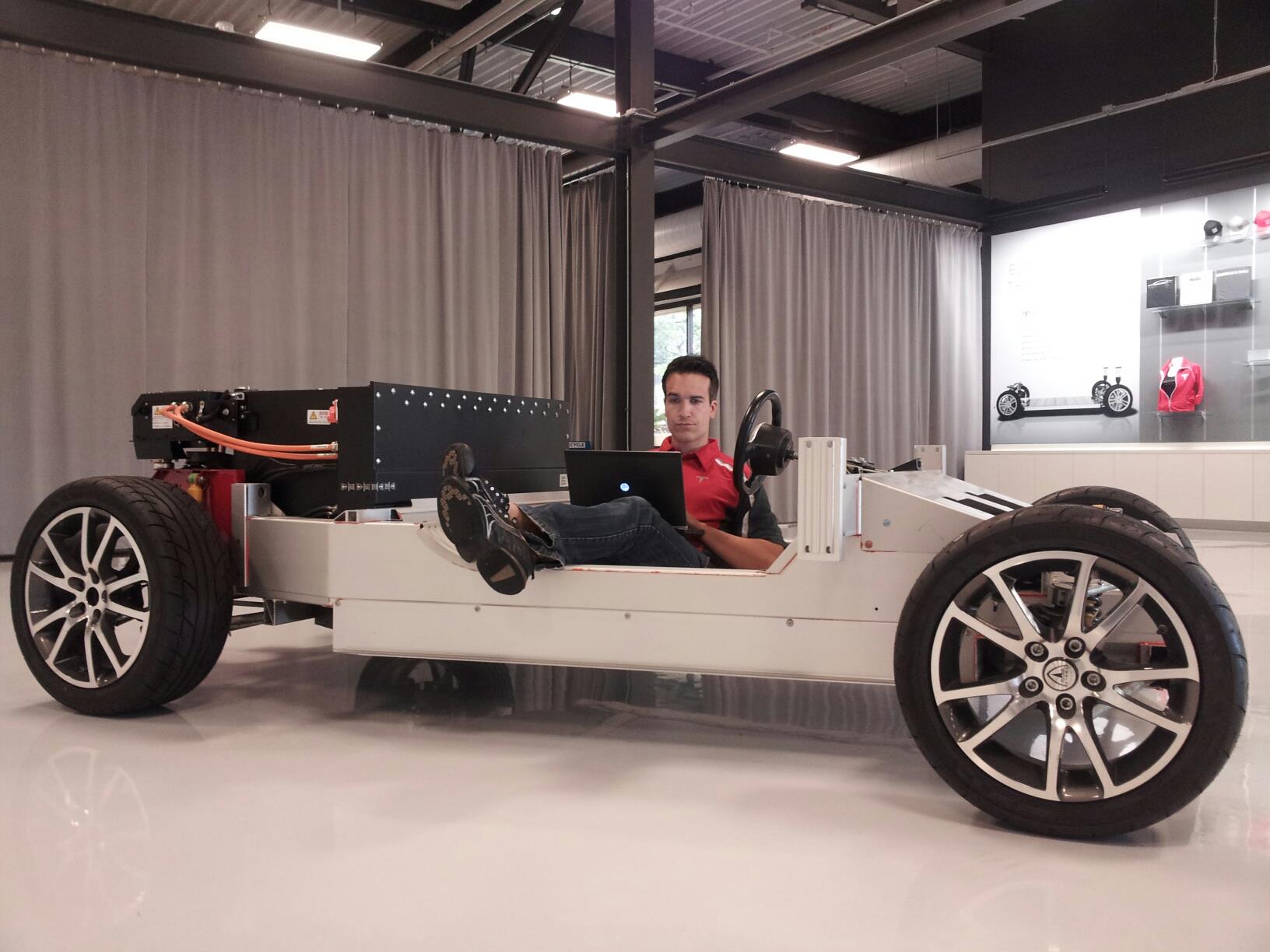
Here Comes the (Electric) Cavalry!
Over the next year, every waking moment for me and my team was spent in and around Tesla’s new star, the Model S. We personally delivered each of them (via truck and trailer) to the homes of their anxiously awaiting owners throughout the New York tri-state area. The challenges were many and the resources were few. Success hinged on the tenacity of my team and our ability to creatively overcome obstacles as they arose.
The destructive aftermath of Hurricane Sandy in the fall of 2012 left all gas stations in the greater New York City area out of commission for weeks. Even after electricity was eventually restored to the area, a vast majority of gas stations remained offline for weeks longer. In an ironic twist of fate, this meant that we had no diesel fuel to fuel the delivery trucks that towed the electric cars to our customers. As a solution, we devised a plan where we would (with the customer’s permission) drive the Model S to the customer’s home. We then had to figure out how to get the Tesla teammate back to base after the delivery. Customers’ homes were often outside the territory of New York City Transit, and vehicular options like cabs and (new on the scene) Uber were not viable due to the gasoline shortage. To solve this, we devised a plan where one of us would drive the Model S and one of us would drive in a chase vehicle to give the teammate driving the S a ride back after the delivery. The only chase vehicle available and capable of this unique task was a Roadster that someone had just recently traded in for a Model S.
Customers enjoyed seeing the Roadster make a cameo at their already highly anticipated Model S delivery. They viewed it as an extra little bonus to their delivery experience to have the famed original Tesla be present for them getting their Tesla — a sentimental “passing of the torch” of sorts. It was a neat happening born out of logistical necessity, an operational approach to problem solving rooted in the first-principles thinking that is stamped into Tesla’s company DNA.
Caravanning the Model S and Roadster to customers’ homes was a surreal scene: two electric cars quietly whirring through the eerily empty streets of the usually bustling New York City; zipping past mile-long lines of gas cars queued up at the few gas stations that were allotted to operate under an emergency gas rationing protocol instated by Mayor Bloomberg. Fate does indeed love irony.
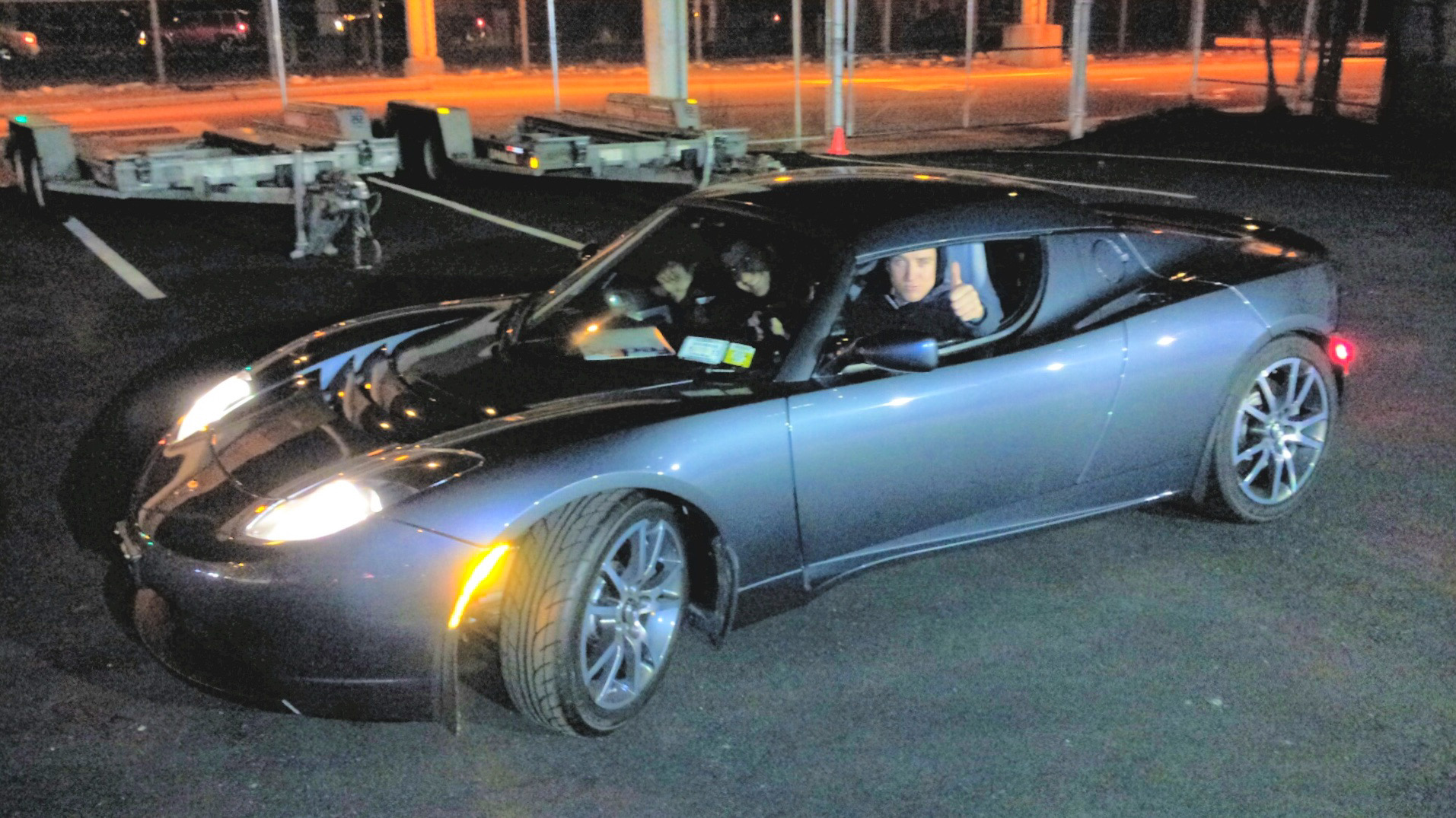
Use What You’ve Got
My wife, while down in Sarasota, Florida, for work during the winter of 2013, sent me a picture of a “Glacier Blue” Roadster that was stopped in front of her in traffic. Little did I know that fate would bring me to become acquainted with the owner of that very Roadster only a few months later. My wife and I had been exploring the possibility of relocating to Sarasota ever since visiting my in-laws at their winter home there. I viewed my wife’s Roadster sighting as an oracle-like sign that the possibility of relocating down there should be further explored. In the summer of 2013, destiny would manifest that possibility.
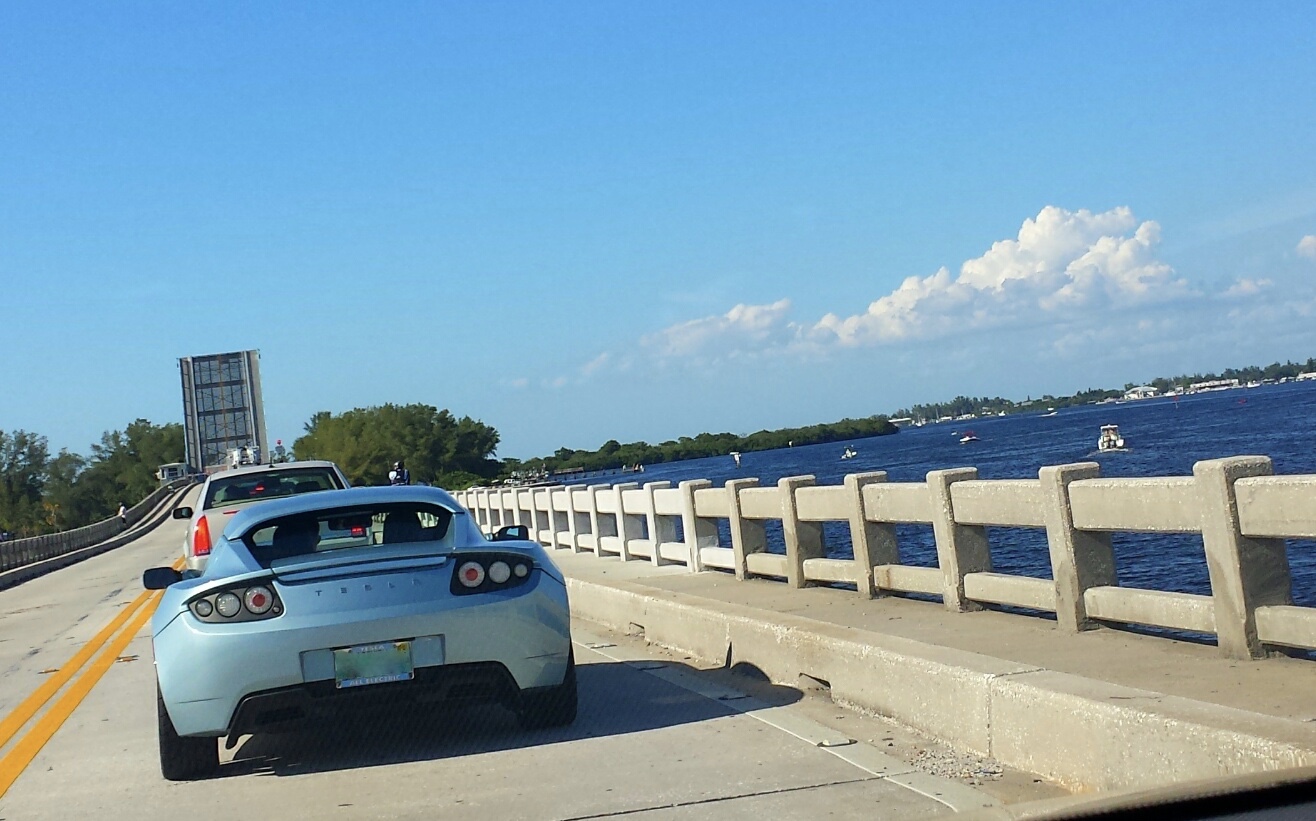
That summer (2013), I became part of Tesla’s “Asset-Lite” program; a small expeditionary unit of Tesla’s sales team. I affectionately nicknamed the role the “Johnny Appleseed of Tesla” — a lone pioneer, planting the seeds of rEVolution across the land. I was tasked with establishing Tesla’s permanent sales presence on Florida’s gulf coast. My wife and I packed up and moved from New York City down to Sarasota, Florida. On top of wanting to move there anyway, Sarasota was an ideal strategic location to operate out of, considering the mission at hand. Sarasota is an upscale city that sits on Florida’s paradisiacal “Suncoast” between Tampa to the north and Naples to the south. I was given a top-spec Model S marketing car to facilitate test drives, host marketing events, and use as my personal daily driver.
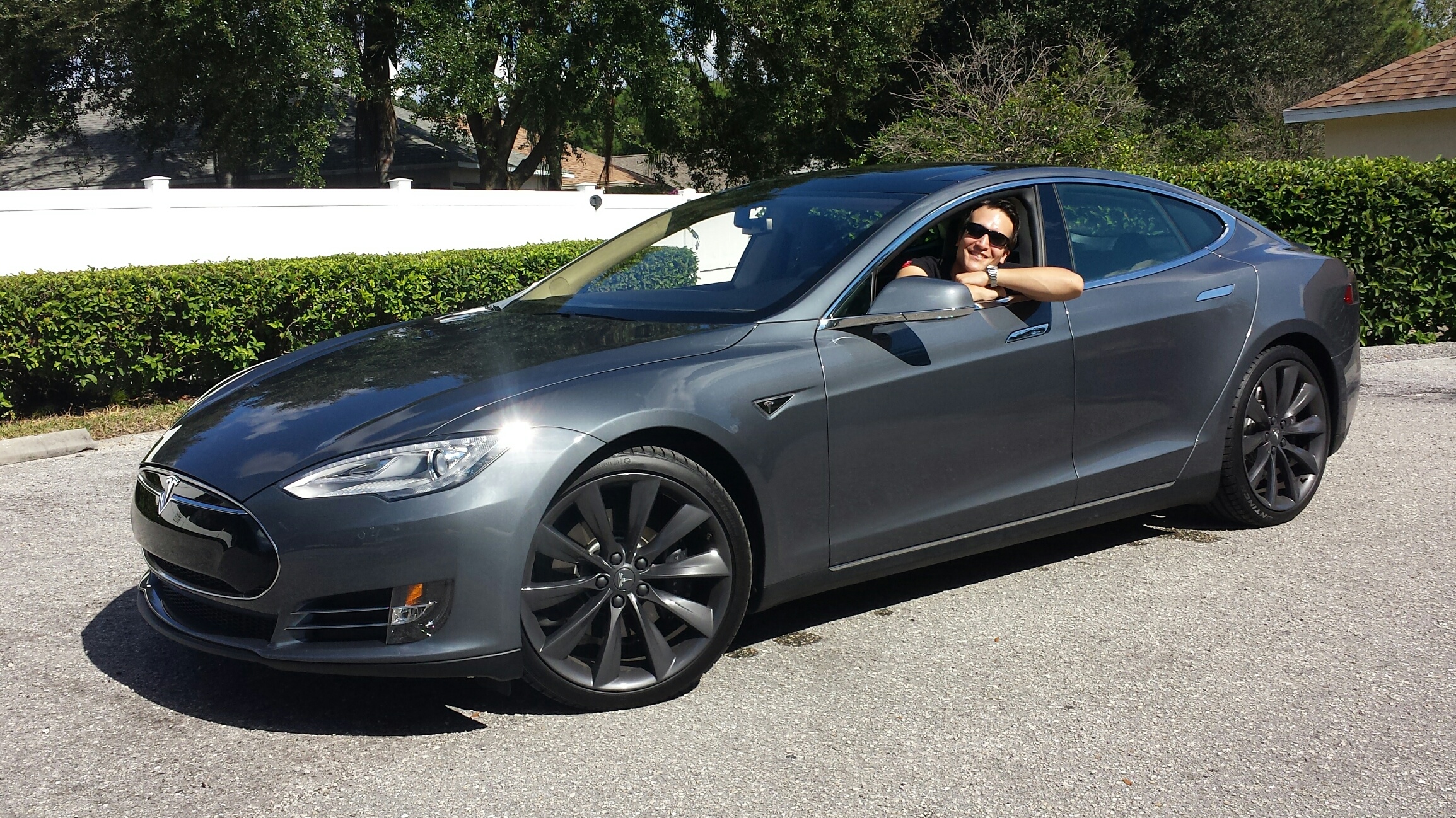
In lieu of any brick-and-mortar sales locations in that area, the test drives were usually conducted either at the customer’s home/work or at the original boutique-sized Tesla service center located in the Tampa area. While most sales at that point were custom orders, periodically either I or one of my colleagues somewhere else in the country would sell my actual marketing car as an “inventory car.” This recurring event not only temporarily left me without my primary selling tool; it left me without any wheels at all. At that time, I did not have a car of my own outside of the Model S that Tesla provided me. Whenever it sold, it could take a few days to either get a newly built replacement to be rerouted to me from the factory in California, or for me to bogart one from the Miami team’s test drive fleet.
As fate would have it, the remedy to these gaps in my mobility came in the form of yet another “Glacier Blue” Roadster. Someone had traded it in for a Model S some time ago, and ever since then, it had been tucked in the corner of a storage area at the Tampa service center. Even though I didn’t have a Model S to sell, I had every intention to continue serving the Tesla Kool Aid with that Roadster, which I affectionately nicknamed “Old Blue.”

Besides both having an electric powertrain, the Roadster and the Model S were radically different vehicles. One was a small, raw, seat-of-your-pants two-seater; and the other was a full-size, four-door, high-tech luxury sedan. They were the automobile equivalent of apples and oranges. But the important thing was what they had in common: the instant torque and uninterrupted linear thrust that an electric motor provides. That was all I needed to spread the Tesla gospel.
Just as with the Model S marketing car, everywhere I went (even with my wife, who had the patience of a saint), if somebody showed interest in Old Blue, I would give them a quick demo ride. It didn’t matter where it was; the theatre, the grocery store — anywhere. Every observer was a potential customer, or at least an EV convert to-be. Whether it was friends and family visiting from out of town or total strangers on the street, I was always on the clock, serving that sweet Tesla Kool Aid to anyone who wanted a taste. I was shameless.
When my wife and I went out to eat, I would “park it like a pimp” right in front of the restaurant whenever possible. Heck, I would park it on the sidewalk if I could get away with it. I wanted people to have to practically trip over the car in order to get into the building. The Roadster was a rolling billboard that I constantly jockeyed for optimum exposure. And it worked. Wherever I went, whether I was coming or going, onlookers would often stop and ask about it, which then sparked a conversation about the benefits of electric motoring. This either led to a quick demo ride or an exchange of contact information to schedule a test drive in the Model S for when my next one arrived. I would also wedge a few of my business cards in the window seal of the driver-side door of the Roadster for anyone who happened by the car while I wasn’t there. This, too, directly led to booking more test drive appointments, and later down the line, sales of Model S (and even Model 3 — more on that in a bit).
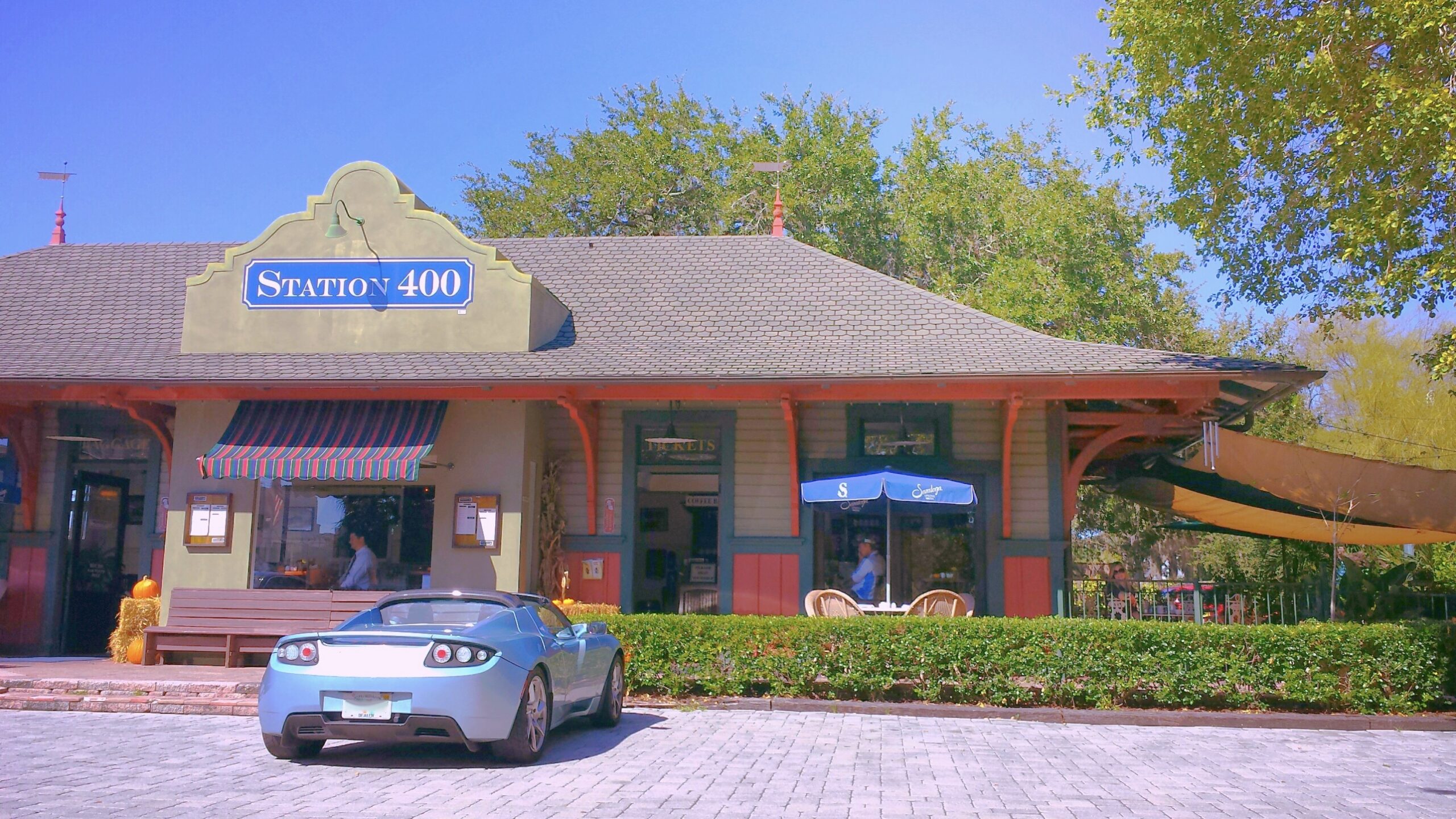
Pole position at green lights were another opportunity to give the cars around me a quick demonstration of electrified instant torque. As far as I am concerned, it is my diplomatic duty, as an ambassador to the EV technology, to blow away gas cars at the light (just to the speed limit, of course). I can’t tell you how many times someone came into the Tesla store over the following years to buy a car, and when I asked them what motivated them to come in and make the purchase, they would tell me about how they tried to drag race a Tesla in their high-end sports car; only to be left in the dust. At that moment, they thought to themselves: “I’ve got to get one of those things!” Now, I’m not saying that all of those little traffic light drag races were me — of course not — but I definitely fostered this practice of “exhibitionist ambassadorship” amongst the local Tesla community.

Of course, I had to actually sell cars in the near term so that Tesla could pay the bills and continue to grow, but the traditional “make the quick sale” mind frame was not how I approached introducing someone to Tesla. I viewed it more as a VIP glimpse to an amazing new world of transportation. It was a celebration, not a sales pitch. It didn’t matter if I had the Model S that I could sell them right then and there, or the Roadster that was no longer for sale. It didn’t matter if the person was currently in the market for a car or not. It didn’t matter if the person drove a high-end luxury sports car or an inexpensive base economy car. I was playing both a short game and a long game.
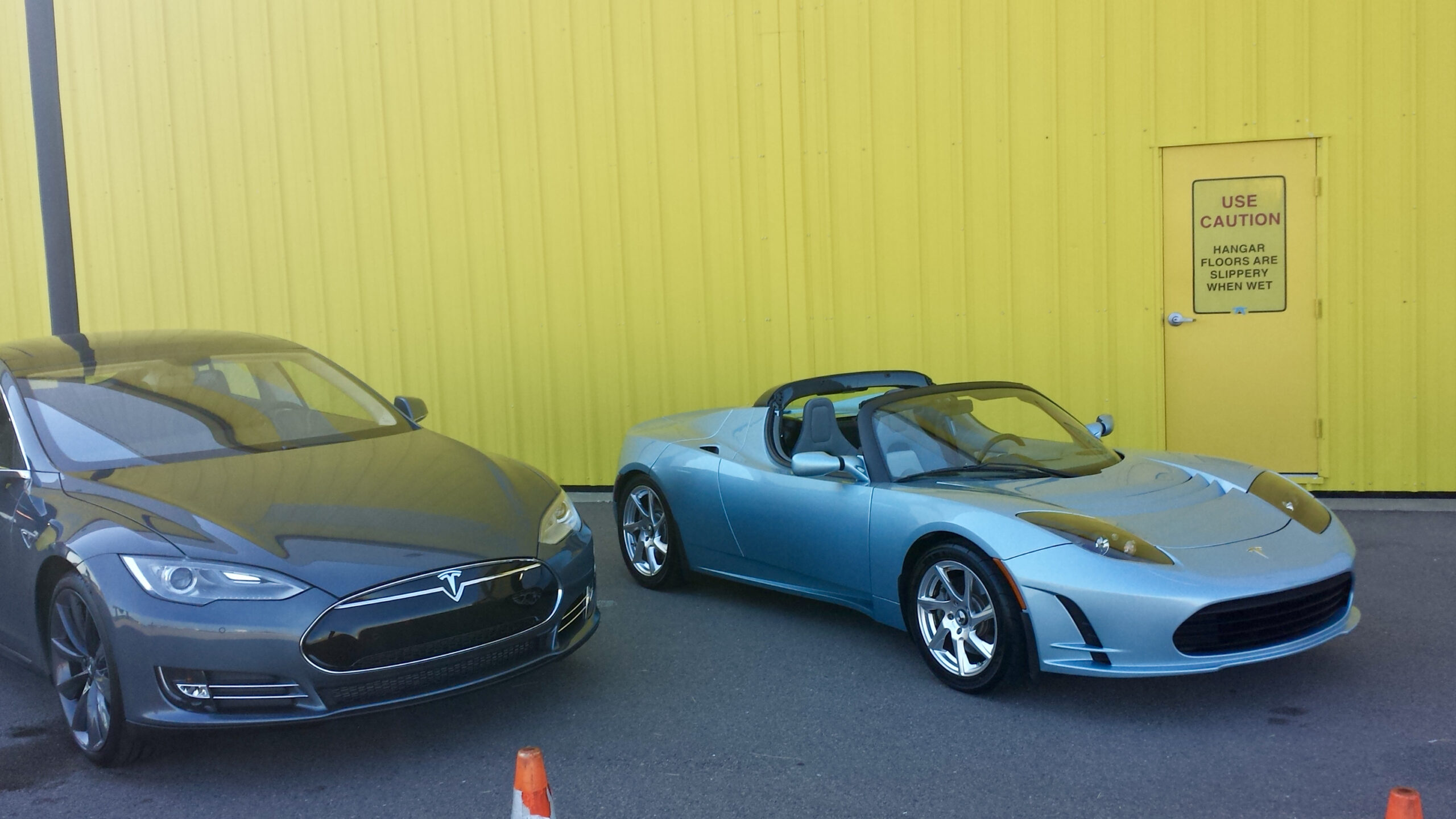
I knew full well that some of the people I gave rides to were in no position to drop $70K to $130K on a car at that moment (or ever), but I saw myself in them. I knew that (like me) when they experienced the awesomeness of Tesla electric motoring, that same “seed of desire” that was planted in me would then be planted in them as well. The drive to plant this seed in as many people as possible is what fueled me. Whether the seed sprouted that day, or in the next 10 years, I knew that there was a good chance that the same mantra that had echoed in me would also start echoing in them; “Someday I will have a Tesla.”
Whether I was sitting in the driver’s seat giving a ride, or sitting in the front passenger seat during a test drive, I witnessed that special moment when the “seed of desire” was planted — thousands of times. It was by far the most rewarding job experience of my time in corporate life.
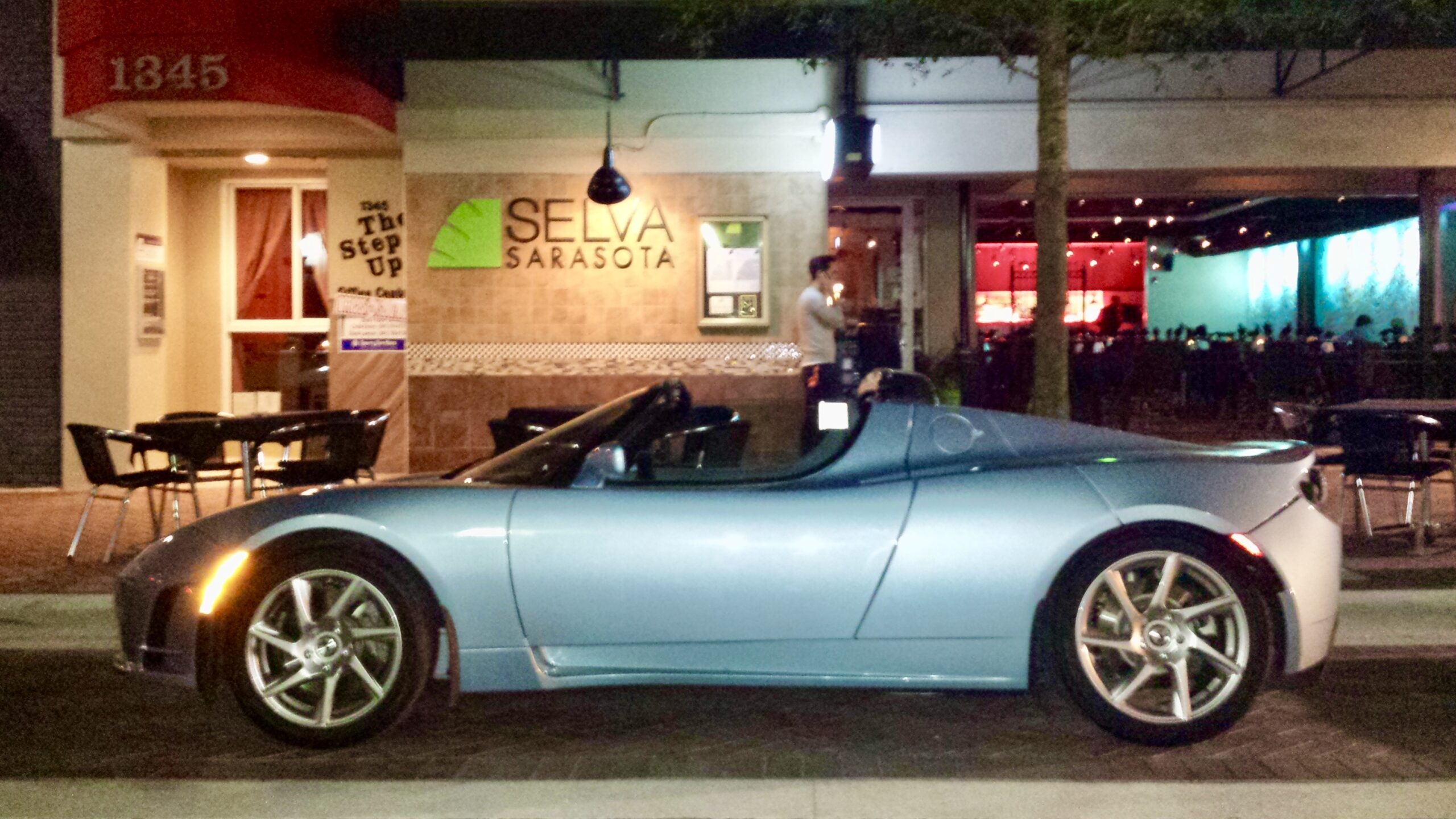
The “Seeds of Desire” Blossom
On the morning of March 31, 2016, thousands of people lined up (some even camped out overnight) outside Tesla retail locations worldwide to put down a $1,000 reservation for Tesla’s long promised affordable “car for the masses,” the Model 3. What was even more amazing was that none of them had ever even seen or driven the Model 3 yet. The number of reservations for the Model 3 would ultimately top over 400,000, a pre-order demand no other car in history has ever even come remotely close to achieving (except perhaps the upcoming Tesla Cybertruck).
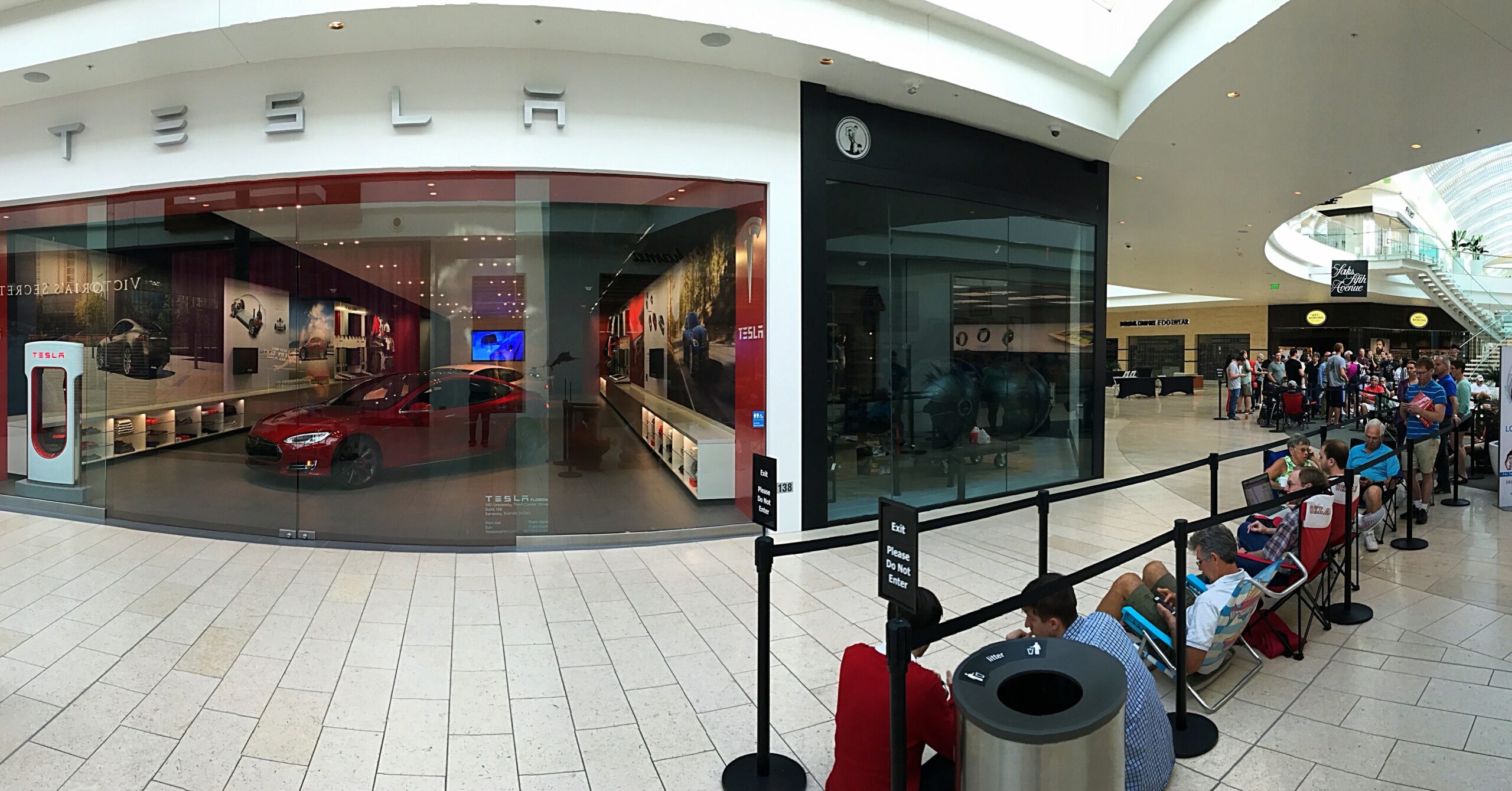
Obviously, all that Model 3 demand wasn’t drummed up just by little old me giving thrill rides in the Roadster through the streets of Sarasota. It was the cumulative result of the tireless dedication shown by the entire Tesla Team, augmented over the years by the legions of ever-growing enthusiastic Tesla owners who were more than willing to show off their cars to anyone, anytime, anywhere; planting the “seed of desire” like honorary Asset-Lites.
This has been a chronicle of how the Tesla Roadster influenced my own personal journey to accelerate the world’s transition to sustainable transportation. It is but one chronicle in the vast annals of Tesla’s brief yet epic lore — a lore that all began with the Tesla Roadster. As rewarding as it was over the years to have someone place their order for their top-end Model S right after their test drive, it has been even more rewarding to have some of the people that I gave impromptu demo rides to in the Roadster reach out to me years later to tell me that they just placed their order for their Model 3, largely influenced by the ride I gave them years earlier in the Roadster. Bravo, Old Blue.
Tesla’s first car was destined to be much more than just a high-priced, small-volume plaything. Although it was a high-priced low-volume product that only a tiny fraction of car buyers could afford, it sparked the imagination of car buyers from every budget. It gave a glimpse into a sustainable future that was not one of compromise and sacrifice, but one of benefit and bounty. It set the tone for Tesla being a harbinger — and bonafide leader — of an exciting new chapter in mobility and energy.
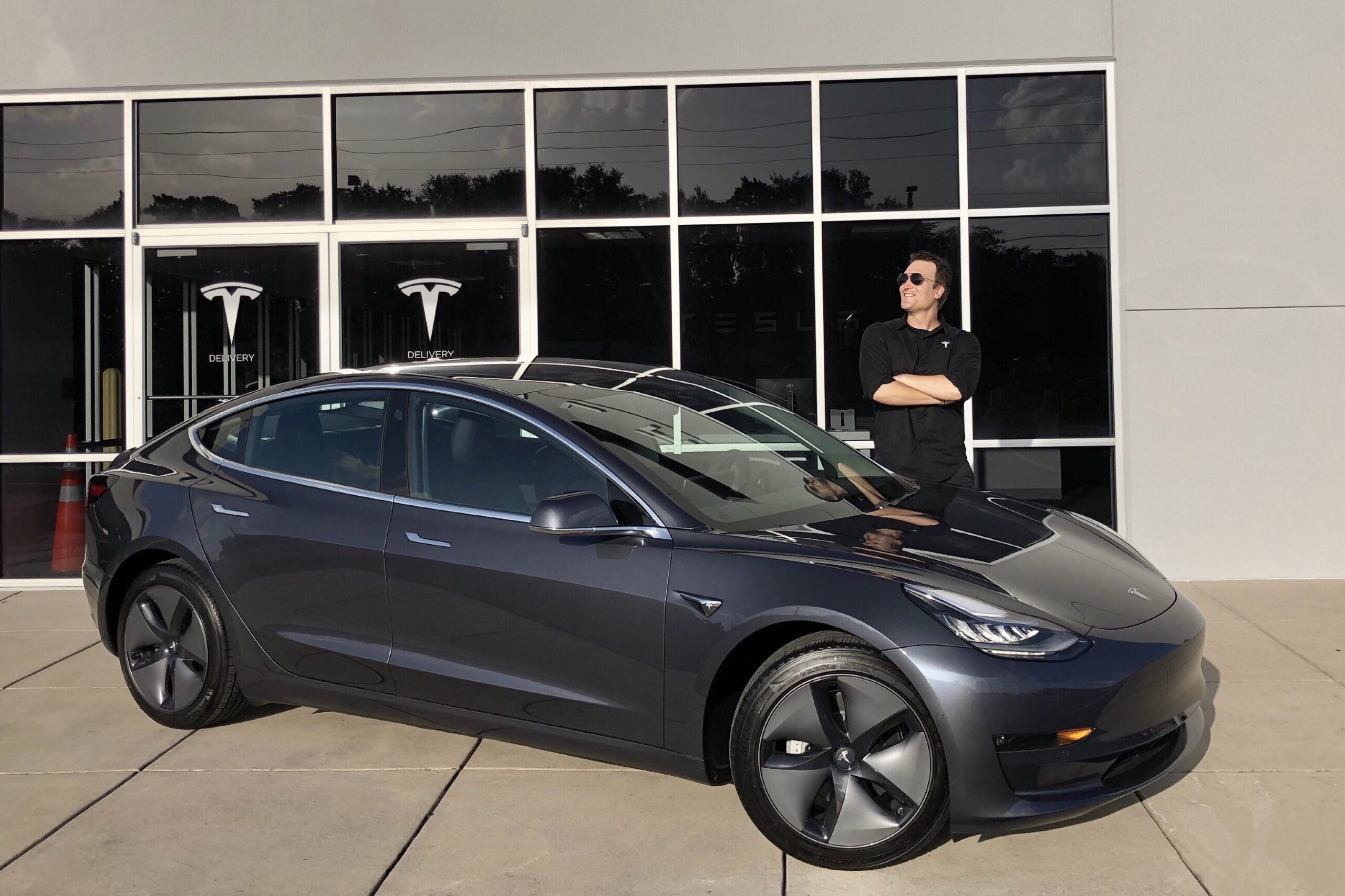
In July of 2019 (coincidentally my last month working at Tesla), I took delivery of my Long Range, Dual Motor Model 3. I opted for the “Acceleration Boost” upgrade, cutting its already quick 0–60 mph time of 4.2 seconds down to just 3.7 seconds; which coincidentally is the same 0–60 time as the original Tesla Roadster Sport. To me, every 3.7 second linear leap to 60 mph in my Model 3 is more than just a trivial rush that comes at every green light or when slingshotting out of an apex; it’s a sentimental tip-of-the-hat to the Tesla that started it all — the original Tesla Roadster.
To this day, I pinch myself. If you would have told me back in 2010 that I would own a Tesla at all, let alone one that is that quick, I think I would have flipped out in giddy disbelief. The “seed of desire” that was planted in me by the original Roadster finally bloomed when my dream of owning a Tesla became a reality, and mine is only but one of the countless seeds sprouting all over the world at an ever accelerating pace. It is a glorious phenomenon to witness.
One last thing — I do fully plan on getting the next-generation Roadster, and yes, it will be in “Glacier Blue.” Be well, all. Viva la rEVolution!
STOCK DISCLOSURE & DISCLAIMER: During my employment at Tesla from 2012 to 2019, I was granted and optioned thousands of shares of $TSLA stock at ~$5/share (post split). I am long $TSLA with a multimillion-dollar stake in the company, and do not intend to sell any part of my stake for several years. Any content I create is not intended to be investment advice, and should not be viewed as such. Always do your own research before investing.
Getting a new Tesla vehicle or energy product? Use my referral link for exclusive perks! http://ts.la/david7
Have a tip for CleanTechnica? Want to advertise? Want to suggest a guest for our CleanTech Talk podcast? Contact us here.
Latest CleanTechnica TV Video
I don’t like paywalls. You don’t like paywalls. Who likes paywalls? Here at CleanTechnica, we implemented a limited paywall for a while, but it always felt wrong — and it was always tough to decide what we should put behind there. In theory, your most exclusive and best content goes behind a paywall. But then fewer people read it!! So, we’ve decided to completely nix paywalls here at CleanTechnica. But…
Thank you!
CleanTechnica uses affiliate links. See our policy here.

